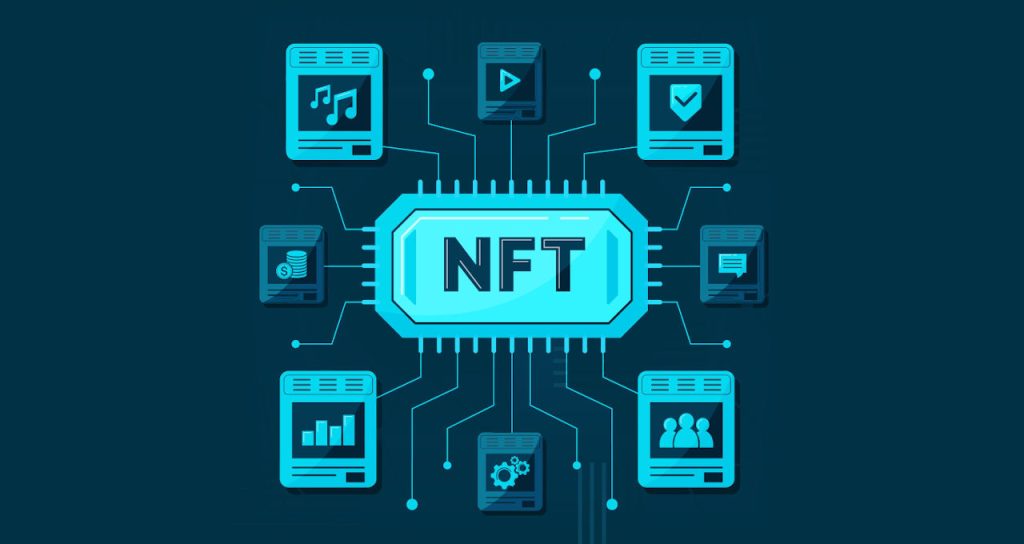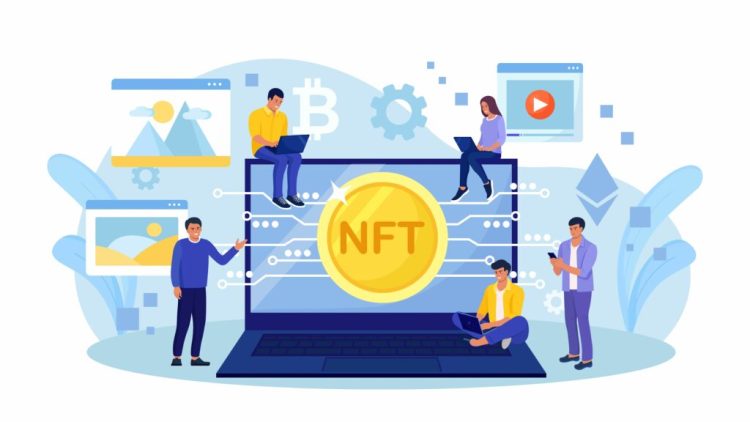Introduction
Non-fungible tokens (NFTs) have rapidly become one of the most transformative technologies in the digital economy. By enabling ownership and provenance tracking of unique digital and physical assets through blockchain technology, NFTs have revolutionized industries like art, gaming, music, and collectibles. However, as the NFT market continues to evolve and expand, one significant challenge that remains unresolved is interoperability.
NFT interoperability refers to the ability of NFTs to seamlessly move and function across different blockchain platforms, marketplaces, and ecosystems. At present, the NFT market is highly fragmented, with NFTs often being tied to specific blockchain ecosystems (such as Ethereum, Solana, and Flow), which limits their ability to interact with each other. This lack of interoperability is hindering the growth of the NFT space and preventing users from fully realizing the potential of NFTs.
This article will explore the interoperability challenges in the NFT ecosystem, why they matter, and how they are impeding the industry’s full potential. Additionally, we will examine the efforts being made to address these issues and provide insights into how interoperability can shape the future of NFTs and the broader digital economy.
Understanding NFT Interoperability
What is NFT Interoperability?
NFT interoperability refers to the ability of NFTs to be easily transferred, used, and traded across different blockchain networks, marketplaces, and platforms. In an interoperable NFT ecosystem, users would be able to seamlessly trade their digital assets across multiple platforms (such as OpenSea, Rarible, or Foundation), without the need for additional conversions or cumbersome processes. This would also extend to cross-chain functionality, where an NFT purchased on one blockchain (e.g., Ethereum) could be resold, used, or accessed on another blockchain (e.g., Solana) with minimal friction.
Why is Interoperability Important?
- Cross-Platform Marketplaces: The NFT market is fragmented into numerous platforms, each focused on different types of digital assets. Without interoperability, users are often limited to buying, selling, and interacting with NFTs on a single platform, reducing the liquidity and overall market reach.
- Increased Market Liquidity: Interoperability enhances liquidity by enabling NFTs to be freely traded across different ecosystems and marketplaces, increasing their potential buyer pool and market value.
- Unified Ecosystems: As the NFT space grows, it’s increasingly important that NFTs from different ecosystems—such as gaming, virtual real estate, and art—can coexist in a unified environment. Interoperability allows digital assets to flow seamlessly between different domains, fostering the creation of interconnected digital economies.
- Improved User Experience: With interoperability, users would not need to navigate complex processes when transferring assets or moving between blockchain networks. This streamlines user interaction with the NFT space and simplifies the buying, selling, and trading process.
Challenges to NFT Interoperability
Despite its importance, interoperability remains one of the most significant barriers to the widespread adoption of NFTs. The main challenges to achieving interoperability in the NFT space can be classified into technical, infrastructural, and market-driven barriers:
1. Blockchain Fragmentation
At the core of the NFT interoperability issue is blockchain fragmentation. Different blockchain platforms (such as Ethereum, Solana, Binance Smart Chain, and Flow) use different protocols, consensus mechanisms, and smart contract languages. As a result, NFTs created on one blockchain may not be easily transferable or usable on another blockchain without significant changes or adaptations.
- Diverse Standards: For example, Ethereum uses standards like ERC-721 and ERC-1155 to create and manage NFTs, while other blockchains, such as Solana, use their own standards for NFT creation. These differences in technical standards make it difficult for NFTs to function across various blockchain ecosystems.
- Lack of Common Protocols: Each blockchain has its own underlying protocols for handling transactions and creating smart contracts. NFTs created on Ethereum might not be compatible with the systems on other platforms unless bridges or converters are established. This technical fragmentation prevents NFTs from achieving true interoperability across blockchains.
2. Smart Contract Compatibility
Smart contracts are self-executing agreements that define the rules and actions for NFTs. However, different blockchains use different smart contract languages, meaning that an NFT built on Ethereum’s Solidity contract may not work on another blockchain that uses a different language or contract structure.
- Ethereum’s ERC-721 and ERC-1155: These are the most common standards used in the NFT space, but there is no universal standard that allows NFTs to be easily integrated with other chains. Solana uses its own protocols, such as Metaplex, and these may not be directly compatible with Ethereum-based NFTs.
- Platform-Specific Features: Different blockchains offer platform-specific features that may not be easily transferable. For instance, Ethereum supports decentralized applications (dApps) that allow users to interact with NFTs in complex ways, while Solana focuses more on transaction speed and low fees, which may limit the types of functionality that can be applied to NFTs.
3. Market Fragmentation
NFTs are traded across a fragmented landscape of marketplaces, including well-known platforms like OpenSea, Rarible, and SuperRare. Each of these platforms primarily supports NFTs from specific blockchains, leading to a lack of liquidity across platforms and creating additional friction for users who want to trade NFTs across different ecosystems.
- Platform-Specific Ecosystems: Each marketplace has its own ecosystem, and users are often required to lock their assets into one platform. For example, an NFT purchased on OpenSea (Ethereum-based) cannot be easily resold on a platform that operates on a different blockchain, such as Solana-based Magic Eden.
- Limited Asset Transfer: When an NFT is confined to a particular platform or blockchain, it limits its accessibility to a wider audience. As a result, the NFT’s market value is constrained by the liquidity and reach of the specific platform, reducing its potential trading volume.

4. High Transaction Fees
Ethereum, the largest platform for NFTs, is notorious for its high gas fees during periods of network congestion. This significantly affects users’ ability to move NFTs across platforms or blockchains. In some cases, the transaction fees required to bridge NFTs from one blockchain to another can exceed the value of the asset itself, further discouraging interoperability.
- Incentives to Stay on One Chain: High transaction fees on Ethereum may incentivize users to stick to a single chain or marketplace, especially if bridging or transferring assets to another blockchain is costly.
- Economic Barriers to Interoperability: If the cost of moving NFTs between chains or platforms is too high, users are less likely to adopt cross-chain functionality. This creates a significant barrier to true NFT interoperability and widespread market growth.
Efforts to Address NFT Interoperability Challenges
Despite the challenges outlined above, there are several ongoing initiatives and innovations aimed at resolving the interoperability issue. Let’s look at some of the most promising developments in this space:
1. Cross-Chain Protocols
One of the most promising solutions to NFT interoperability is the development of cross-chain protocols. These protocols are designed to enable different blockchain platforms to communicate and share assets seamlessly. Polkadot and Cosmos are examples of blockchain platforms that focus on enabling interoperability across different blockchain networks. Both projects aim to create a decentralized, interconnected ecosystem where assets, including NFTs, can be freely transferred between blockchains.
- Polkadot uses a unique parachain model, which allows individual blockchains to connect and interact with one another. NFTs created on one parachain can be easily transferred to another, making it easier to trade and interact with NFTs across ecosystems.
- Cosmos implements the IBC (Inter-Blockchain Communication) protocol, which allows NFTs to move freely across different blockchains in the Cosmos network. This solution focuses on enhancing cross-chain interoperability and reducing friction in asset transfer.
2. NFT Standards
The development of a universal NFT standard could help to unify the various fragmented protocols and standards that exist today. By creating a standardized framework for NFTs, creators and developers could ensure that their NFTs are compatible with multiple blockchains and marketplaces.
Some projects are already working towards creating more flexible NFT standards that can operate across multiple chains. ERC-721 and ERC-1155 are Ethereum-based standards, but efforts to create cross-chain standards are gaining momentum. For instance, ERC-4907 is a proposed standard that is more flexible and could potentially be used across different platforms, enhancing NFT interoperability.
3. Layer 2 Solutions and Sidechains
Layer 2 solutions like Optimistic Rollups and zk-Rollups are designed to handle transactions off-chain and settle them on the main blockchain only when necessary. These solutions can significantly reduce transaction fees and improve scalability, making it more feasible for NFTs to be transferred across blockchains with lower costs.
In addition, sidechains (such as Polygon and Avalanche) are gaining traction as an alternative to mainnet blockchains. Sidechains are independent blockchains that are connected to a main chain (e.g., Ethereum), enabling assets, including NFTs, to be transferred with lower costs and faster speeds.
4. NFT Bridges and Wrapping
NFT bridges and wrapping technologies are emerging as practical solutions for enabling NFTs to be transferred across different blockchain ecosystems. These technologies allow NFTs to be “wrapped” into a token that can be transferred to another blockchain and then “unwrapped” when it reaches its destination.
By using NFT bridges, NFTs can be moved across different chains, allowing for greater interoperability between different ecosystems. However, these solutions are still in early stages and require further development to ensure security, scalability, and user-friendliness
.
The Future of NFT Interoperability
The future of NFT interoperability looks promising as the industry works toward creating solutions that address the technical, market, and economic challenges of cross-chain compatibility. As more blockchain platforms, standards, and tools emerge, the NFT ecosystem will become increasingly interconnected, allowing users to freely buy, sell, and trade digital assets across different platforms and networks.
As NFT interoperability improves, we can expect to see a more vibrant, liquid, and dynamic NFT market. Cross-chain NFTs will open up new possibilities for creators, collectors, and investors, and help to build a more interconnected digital economy where ownership, creativity, and digital assets can seamlessly flow across blockchain ecosystems.
Conclusion
NFT interoperability is one of the most critical challenges facing the digital asset space. Without seamless cross-chain functionality, the potential of NFTs remains constrained by the boundaries of individual blockchains and marketplaces. However, the development of cross-chain protocols, universal NFT standards, Layer 2 solutions, and NFT bridges provides a promising path toward resolving these issues.
As the NFT industry continues to grow and mature, interoperability will play a central role in ensuring that digital assets can thrive across ecosystems, platforms, and marketplaces. By overcoming fragmentation, enhancing liquidity, and improving the user experience, interoperability will help drive the future success of NFTs and shape the next generation of the digital economy.

















































